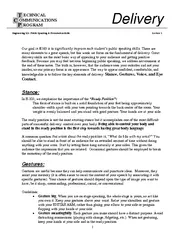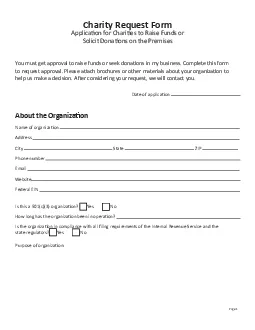PDF-ECHNICAL OMMUNICATIONS ROGRAM Delivery Organiza tion E
Author : giovanna-bartolotta | Published Date : 2015-06-15
Great delivery skills are the most basic way of appealing to your audience and getting positive feedback Because you may feel nervous beginning public speaking we
Presentation Embed Code
Download Presentation
Download Presentation The PPT/PDF document "ECHNICAL OMMUNICATIONS ROGRAM Delivery O..." is the property of its rightful owner. Permission is granted to download and print the materials on this website for personal, non-commercial use only, and to display it on your personal computer provided you do not modify the materials and that you retain all copyright notices contained in the materials. By downloading content from our website, you accept the terms of this agreement.
ECHNICAL OMMUNICATIONS ROGRAM Delivery Organiza tion E: Transcript
Download Rules Of Document
"ECHNICAL OMMUNICATIONS ROGRAM Delivery Organiza tion E"The content belongs to its owner. You may download and print it for personal use, without modification, and keep all copyright notices. By downloading, you agree to these terms.
Related Documents














